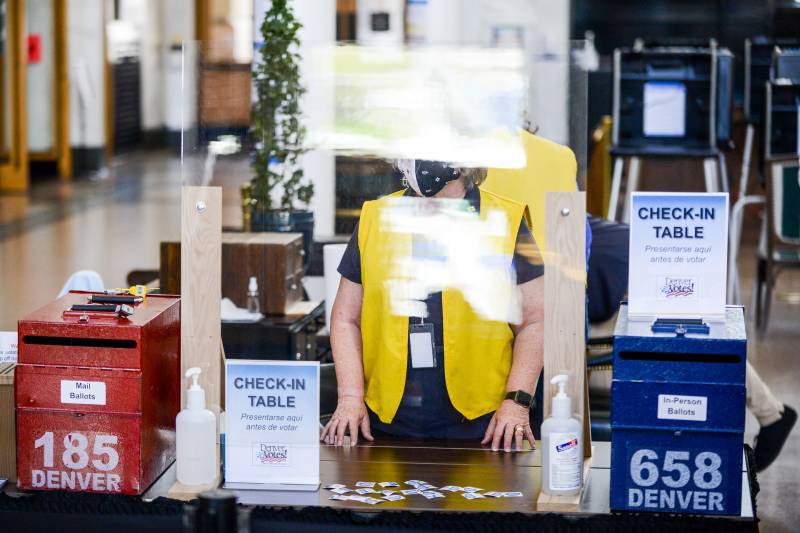Despite California’s extensive experience with mail-in voting, the state will still face challenges that didn’t exist in Colorado and Utah, said Paul Gronke, Director of the Early Voting Information Center at Reed College.
In Colorado, only a fraction of voters choose to vote at the polls, and vote centers are more typically used for voter services, like updating registration forms.
“California is still in the adaptation phase and there are significant numbers of the citizenry who either need, for important reasons, or who choose to cast their ballots in person,” Gronke added. “So, I think California officials are still adapting to try to figure out exactly how many voters are going to be appearing in person.”
In California’s March primary, voters faced daunting lines at vote centers in Los Angeles, a problem that was largely the result of faulty technology, but was compounded by a failure to adequately balance staff across the county’s voting locations.
To avoid lines, California officials will have to carefully project where voters will turn out, as they shift to larger, more dispersed voting locations.
Tuesday’s primaries in Colorado and Utah also continued another vote-by-mail trend: a vote-counting process likely to extend days or weeks beyond Election Day. Colorado reported just 60% of results on Tuesday and, as of Thursday evening, Utah’s hotly-contested Republican primary for governor was still too close to call.
“Everyone needs to calm down, wait a few days, give election officials the time and the space to be able to process those ballots and count them,” Gronke said.

